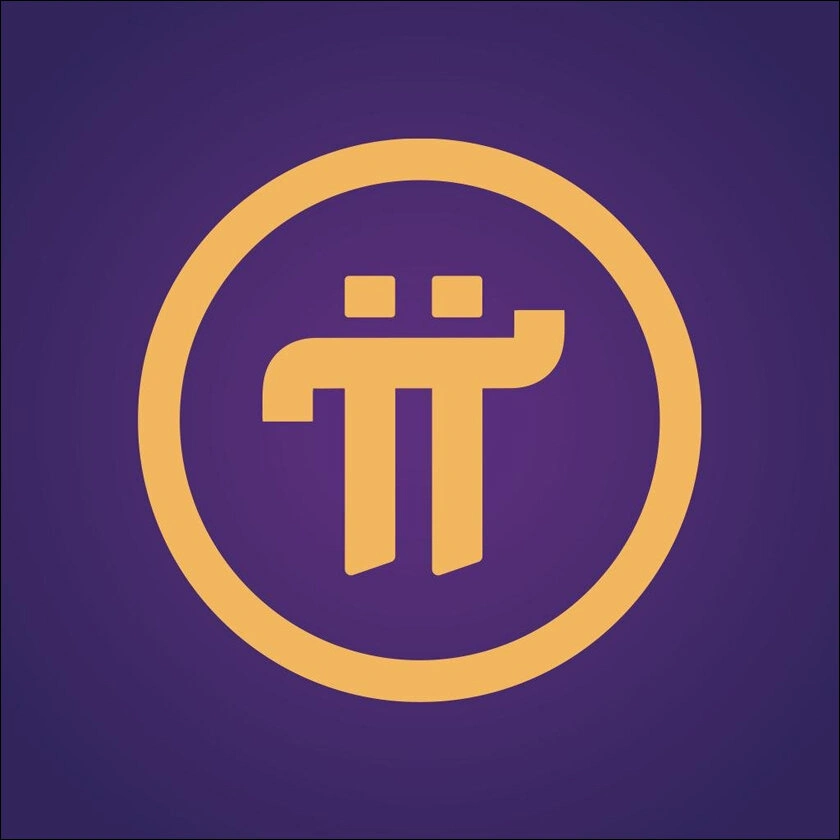
Pi Network
Risk Management
?Risk Management
The RMA™ is a blockchain credibility certification assessing governance, transparency, security, and results, providing trusted verification for businesses in Web3.
VaaSBlock has not audited this project and cannot vouch for this organization.
RMA™ Status: ❌ Unverified
Verification of 6 major compliance criteria.
Technology
?Technology
A collection of public facing information, data collected through partners and our own tools view we present a projects technology in one place for easy verification.
Analysis and testing of tech infrastructures.
Marketing
Alpha?Marketing
Top level look at a projects marketing capablities currently in alpha this section will grow to show quickly how a project promotes itself and the effectiveness.
Screening of user base and community feedback.
Background
?Background
Using multiple public facing sources across the web view a summary of a projects purpose, key achievements and general overview.
Collection of basic administrative documentation.
Risk Management
Last Updated
2025/4/16
Transparency
Transparency Score
Algorithmic assessment of a project’s transparency level, using multiple public data points to measure its commitment to compliance, documentation, and clarity in communication.
Transparency Score
Category Rank
A ranking that positions the organization among its industry peers, evaluating its relative performance based on key compliance, credibility, and transparency indicators.
Category Rank
Pi Network vs Banking & DeFi
VaaSBlock Rank
A global ranking that compares the organization against all entities listed on VaaSBlock, reflecting its overall credibility, transparency, and operational performance versus the full Web3 ecosystem.
VaaSBlock Rank
Pi Network vs All Listed Organizations
Transparency
Transparency Score
Transparency Score
Algorithmic assessment of a project’s transparency level, using multiple public data points to measure its commitment to compliance, documentation, and clarity in communication.
Category Rank
Pi Network vs Banking & DeFi
Category Rank
A ranking that positions the organization among its industry peers, evaluating its relative performance based on key compliance, credibility, and transparency indicators.
VaaSBlock Rank
Pi Network vs All Listed Organizations
VaaSBlock Rank
A global ranking that compares the organization against all entities listed on VaaSBlock, reflecting its overall credibility, transparency, and operational performance versus the full Web3 ecosystem.
RMA™
✘ UnverifiedCorporate Governance
The verification of fundamental governance, organizational structure, including verifying the entity’s legal registration and adherence to local laws and regulations.
Corporate
Governance

Team Proficency
Evaluation of an organization’s personnel, ensuring that crucial team members possess the expertise and dedication necessary to execute current business models and scale effectively.
Team
Proficiency

Technology & Security
Assessment of the organization’s technological framework, including blockchain integrations (where relevant), system architecture, and overall IT infrastructure.
Technology
& Security

Revenue Model
Comprehensively evaluation of a company’s income-generating strategies (how do they make or intend to make money), ensuring financial robustness and sustainability.
Revenue
Model

Results Delivered
The Results Delivered component of the RMA™ audit comprehensively evaluates an organization’s ability to achieve its goals and honor its commitments.
Results
Delivered

Planning & Transparency
The Planning and Transparency component of the RMA™ audit offers a thorough assessment of how an organization manages its workflow and prepares for unexpected challenges.
Planning &
Transparency

Technology
Marketing
Marketing Effectiveness
This score assesses the impact of detected marketing activity and the corresponding price movement of a token. The score understands whole market movements to ensure tokens are assessed fairly against peers.
Marketing Effectiveness
Confidence Index
This index determines our confidence in the score we have given. Generally, as more data is collected, the confidence index will increase. If a project has lots of activity, this confidence is earned faster.
Confidence Index
VaaSBlock Rank
This identifies where a project sits compared to all projects accessed for Marketing Effectiveness.
VaaSBlock Rank
Pi Network vs All Listed Organizations
Marketing Effectiveness
Marketing Effectiveness
This score assesses the impact of detected marketing activity and the corresponding price movement of a token. The score understands whole market movements to ensure tokens are assessed fairly against peers.
Confidence Index
Confidence Index
This index determines our confidence in the score we have given. Generally, as more data is collected, the confidence index will increase. If a project has lots of activity, this confidence is earned faster.
VaaSBlock Rank
Pi Network vs All Listed Organizations
VaaSBlock Rank
This identifies where a project sits compared to all projects accessed for Marketing Effectiveness.
No Chain No Gain™ Podcast ⛉
This Organization is yet to join the No Chain No Gain™ Podcast and share insights on what makes their business trustable and innovative.
💡 NCNG generated over 1 Million impressions in its first six months of existence.
PR Impact
PR Impact
VaaSBlock provides estimations to the impact that traditional digital media can have on a project. This is an early release; more areas of PR are planned in future versions.
Search Terms ? Search TermsThese are the terms we discovered the article for on page one of Google. | Est. Traffic ? Estimated TrafficWe estimate how much traffic an article will get. Generally, our estimations are slightly higher than those of more established tools. We are working on the algorithm all the time, and results could change. | Est. Value ? Estimated ValueBased on the estimated traffic we generate an estimation for what this traffic would have cost to generate if you tried to target these users with ads. The positions for the article on google and the location of the traffic are the major factors in this estimation. | |||
|---|---|---|---|---|---|
Pi Network 價格:PI 價格走勢圖、市值與今日新聞 | CoinGecko source: coingecko.com | Pi Network 價格:PI 價格走… — Pi Network 價格:PI 價格走勢圖、市值與今日新聞 | CoinGecko source: coingecko.com | Organic | coingecko.com | ||
Pi 幣社群大,但 Pi Network 生態到底有什麼 dApps 應用? source: blocktempo.com | Pi 幣社群大,但 Pi Network… Seen 2025-02-21T16:54:05+08:00 Pi 幣社群大,但 Pi Network 生態到底有什麼 dApps 應用? source: blocktempo.com | Organic | blocktempo.com | ||
Pi Network source: Coinbase | Pi Network… Seen 2025年2月21日 Pi Network source: Coinbase | Organic | coinbase.com | ||
Pi Network 價格:PI 價格走勢圖、市值與今日新聞 | CoinGecko source: coingecko.com | Pi Network 價格:PI 價格走… Seen 2025年2月21日 Pi Network 價格:PI 價格走勢圖、市值與今日新聞 | CoinGecko source: coingecko.com | Organic | sites.google.com |
| Est. Traffic | Est. Value | ||
|---|---|---|---|
Pi Network 價格:PI 價格走… — | |||
Pi 幣社群大,但 Pi Network… Seen 2025-02-21T16:54:05+08:00 | |||
Pi Network… Seen 2025年2月21日 | |||
Pi Network 價格:PI 價格走… Seen 2025年2月21日 |
Ratings
AlphaOverall
Aggregated Rating
The combined score with AI-driven weighted analysis to provide the best possible project rating.
998811 verifications
Confidence Index
This index determines our confidence in the score we have given. Generally, as more data is collected, the confidence index will increase. If a project has lots of activity, this confidence is earned faster.
Low
998811 verifications
External Reviews
Third-party reviews are important for your reputation.We incorporate them into our Deep Due Diligence framework to provide a more comprehensive and transparent evaluation of each project. Collaborating with VaaSBlock ensures your reviews are not only acknowledged but actively contribute to building trust, improving your credibility, and maximizing the impact of your public reputation. Work with us now.
Background
Organization Name – Pi Network
Category –  Banking & DeFi
Banking & DeFi
About
powered by irmaAI
irmaAIPi Network is a mobile-focused cryptocurrency platform that aims to make digital currency accessible to everyone by allowing users to mine Pi coins directly from their smartphones. It was founded in 2…019 by a group of Stanford graduates, including Dr. Nicolas Kokkalis, Dr. Chengdiao Fan, and Vincent McPhillip. The project is built on the idea that cryptocurrency should be easy to use, inclusive, and available to the general public, rather than being limited to those with access to expensive mining equipment or technical expertise. The platform operates on a unique consensus algorithm called the Stellar Consensus Protocol (SCP), which allows users to contribute to the network’s security and validation without the significant energy costs typically associated with traditional Proof-of-Work systems like Bitcoin.
Pi Network’s approach to mining is what sets it apart from most other cryptocurrencies. Users can mine Pi coins simply by opening the Pi Network app and pressing a button once every 24 hours. This process, known as “mobile mining,” does not drain battery life or consume significant data, as it relies on the collective trust of its community rather than intensive computational work. The network uses a trust graph model, where users validate each other’s legitimacy through their personal connections, creating a web of trusted nodes that secures the network without the need for power-hungry miners.
The project’s whitepaper emphasizes inclusivity and decentralization, aiming to address some of the key issues that have hindered mainstream cryptocurrency adoption, such as complexity, high costs, and energy consumption. The founders believe that by lowering the barriers to entry, they can create a more widely adopted digital currency that can be used for everyday transactions and financial interactions. This focus on accessibility has helped Pi Network rapidly grow its user base, attracting millions of users globally in just a few years.
Pi Network is still in its development phase, currently operating on its testnet as it builds toward a fully decentralized mainnet. This means that while users are accumulating Pi coins, these tokens do not yet have any real-world value or liquidity on major exchanges. However, the team has outlined a multi-phase plan that includes moving to a decentralized mainnet, integrating Pi into real-world applications, and creating a comprehensive ecosystem where Pi coins can be used for goods and services.
One of the critical components of Pi Network’s strategy is building a strong, engaged community. The project has focused heavily on user growth, leveraging referral systems and gamification to encourage new sign-ups. This approach has created a sense of exclusivity and urgency, as users can only join the network through existing members. This viral growth strategy has proven highly effective, rapidly scaling the user base to tens of millions of members worldwide.
The project’s roadmap also includes the development of a decentralized app (dApp) ecosystem where developers can build and deploy applications that utilize Pi as a native currency. This ecosystem is intended to support a wide range of use cases, from digital payments and e-commerce to decentralized finance (DeFi) and peer-to-peer services. To facilitate this, Pi Network plans to launch its mainnet with full smart contract capabilities, making it a versatile platform for developers looking to create blockchain-based applications.
Security and transparency are also central to Pi Network’s philosophy. Unlike many early cryptocurrency projects that operated with a high degree of anonymity, the Pi Network team is public and well-credentialed, adding a layer of trust to the project. The use of the SCP consensus mechanism, which relies on a federated model rather than centralized mining pools, also enhances the network’s security while reducing its environmental impact.
However, despite its rapid growth and ambitious goals, Pi Network has faced criticism and skepticism within the broader cryptocurrency community. Some have questioned its long-term viability, given that its token is not yet publicly tradable and its value remains speculative. Others have raised concerns about the project’s reliance on mobile mining, which, while innovative, deviates significantly from the established models used by other major blockchains.
Moreover, the project’s monetization strategy has also been a point of debate. The Pi Network app features advertisements, which some critics argue undermines the project’s decentralized ethos. The founders have defended this approach, stating that ad revenue helps fund the project’s ongoing development and infrastructure costs.
As Pi Network moves closer to its mainnet launch, the next critical phase will be proving its utility and real-world use cases. The project’s success will likely depend on its ability to foster a thriving ecosystem of developers, merchants, and users who find genuine value in the Pi cryptocurrency. This includes building partnerships with businesses, integrating with existing financial systems, and overcoming the regulatory challenges that have historically hindered blockchain adoption.
In summary, Pi Network represents an ambitious attempt to democratize digital currency and make blockchain technology more accessible to the general public. By focusing on mobile mining, community building, and decentralized governance, the project aims to carve out a unique niche in the competitive cryptocurrency market. However, its long-term success will hinge on its ability to deliver on its promises, transition to a fully decentralized mainnet, and establish real-world utility for its token. As the project continues to evolve, it will be crucial for Pi Network to demonstrate that it can overcome the challenges of scalability, security, and regulatory compliance to become a legitimate player in the digital economy. Read More
Creation Date
November 2025
Headquarters
Palo Alto, California, USA
Organization Maturity Level
Established Firm
RMA™ Type
–
Notable Achievements
2019
Launched mobile mining app for easy cryptocurrency access.
2020
10 million engaged pioneers worldwide.
2022
Released enclosed Mainnet for secure transactions.
2025
Transitioned to open Mainnet for global blockchain integration.
- vaasblock.com /
- Banking & DeFi /
- Pi Network
















